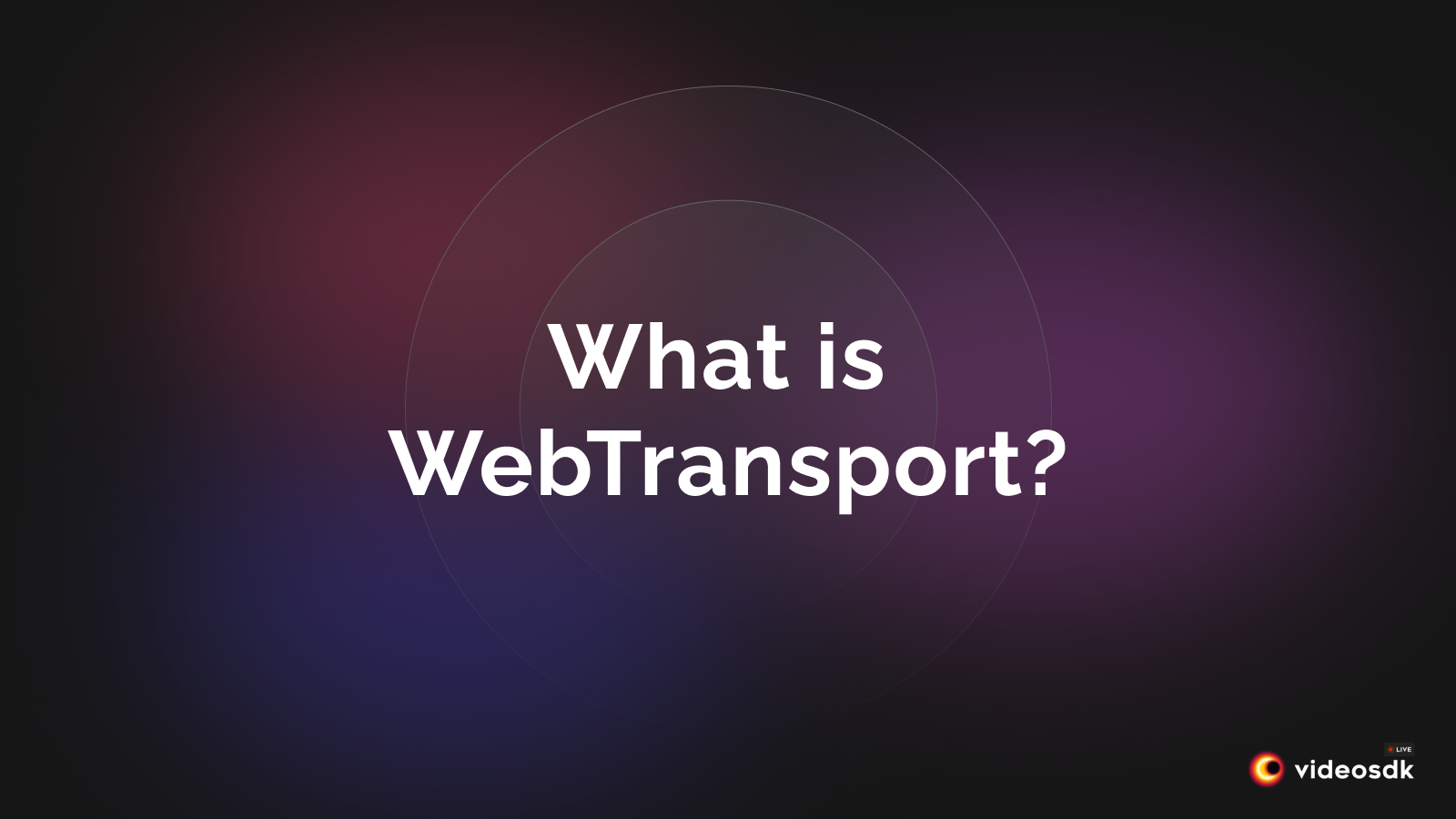WebTransport can be defined as a modern protocol designed to facilitate efficient and low-latency communication between clients and servers over the web. Unlike its predecessors, WebTransport is designed to meet the demands of modern web applications, providing enhanced performance, flexibility, and security.
In the traditional landscape, real-time communication often relied on technologies such as WebSockets or HTTP long polling. While effective, these approaches presented performance, scalability, and security limitations. WebTransport seeks to overcome these limitations by introducing the QUIC protocol, offering several advantages over conventional protocols like TCP.
One noteworthy advantage of WebTransport is its superior scalability. The QUIC protocol supports multiplexing, enabling the transmission of multiple data streams over a single connection. This eliminates the need to establish multiple connections, ultimately reducing latency and enhancing overall efficiency.
WebTransport also emphasizes security by incorporating the advanced security features of QUIC, such as encryption and authentication. This ensures the confidentiality and integrity of the data exchanged between clients and servers, mitigating common security threats like eavesdropping and tampering.
Furthermore, WebTransport encompasses essential features for real-time applications, including flow control, prioritization, and reliable delivery. These features empower developers to optimize application performance, delivering a superior user experience.
To understand the significance of WebTransport, it's essential to trace the evolution of web communication technologies. From the rudimentary HTTP//1.0 to the more advanced WebSockets and the latest HTTP/2 and HTTP/3 protocols, each iteration has strived to improve efficiency and responsiveness in web interactions.
What are the Types of WebTransport?
Several web transport services are available for developers building real-time chat and messaging applications. These services offer scalable and secure platforms for data transmission:
WebSockets
A bidirectional communication protocol allows real-time communication between clients and servers. It supports full-duplex communication, reducing latency and overhead.
WebRTC (Web Real-Time Communication)
WebRTC, an open-source project, facilitates real-time communication between web browsers and mobile applications. This technology enables seamless audio, video, and data transfer for peer-to-peer interaction. WebRTC can be used for various applications, including video conferencing, voice calling, live streaming, and more.
Server-Sent Events (SSE)
Server-sent events (SSE) is a unidirectional communication protocol designed to enable servers to push data to clients using HTTP. In contrast to WebSocket, SSE exclusively supports server-initiated communication. This means that the server can send information to the client without the need for client requests.
HTTP/2 Server Push
HTTP/2 incorporates a notable feature known as server push, enabling servers to proactively send resources to clients without awaiting specific client requests. This functionality proves particularly advantageous in scenarios requiring real-time updates or the pre-loading of resources anticipated by the server.
What are the benefits of using WebTransport?
WebTransport brings several advantages to the table, making it an appealing choice for developers:
Low Latency
WebTransport significantly reduces latency through advanced congestion control algorithms, providing a more responsive user experience.
Improved Efficiency
With multiplexing and stream prioritization, WebTransport optimizes data transfer, reducing connection overhead and enhancing resource utilization.
Scalability
The multiplexing feature allows WebTransport to handle more concurrent connections efficiently, ensuring scalability for applications with high user engagement.
Flexibility
WebTransport supports reliable and unreliable transport protocols, offering flexibility for different real-time communication patterns.
Security
Incorporates modern security mechanisms like TLS for encrypted communication, ensuring the confidentiality and integrity of transmitted data.
Compatibility
WebTransport is designed to work seamlessly with existing web technologies, ensuring compatibility with a wide range of browsers and devices. This compatibility ensures that developers can easily integrate WebTransport into their applications.
What are the Risks Associated with WebTransport?
While WebTransport presents numerous benefits, there are associated risks that developers should be mindful of:
Security Risks
WebTransport uses a new protocol called QUIC, which introduces the source of security concerns. Staying updated with security patches and best practices is crucial.
Compatibility Issues
WebTransport's support may vary across browsers, leading to compatibility issues, particularly with older or less common browsers.
Performance Impact
Improper implementation or excessive data transfer can impact performance. Code optimization is essential to minimize potential bottlenecks.
Complexity:
Learning and implementing WebTransport introduces new concepts and APIs, such as the Streams API, which may introduce complexity into the development process.
Dependency on Third-Party Providers
Reliance on third-party services introduces the risk of downtime or disruptions, emphasizing the importance of choosing reliable providers.
How VideoSDK Leverages WebTransport
VideoSDK
VideoSDK is a comprehensive live video infrastructure designed for developers. It offers real-time audio-video SDKs that provide complete flexibility, scalability, and control, making it seamless for developers to integrate audio-video conferencing and interactive live streaming into their web and mobile applications.
Seamless Integration of VideoSDK with WebTransport
VideoSDK seamlessly integrates WebTransport, empowering developers to incorporate real-time audio-video capabilities effortlessly into their web and mobile applications.
VideoSDK Compatible with Different Platforms
VideoSDK ensures compatibility across diverse platforms, allowing developers to harness the power of WebTransport in creating cross-platform applications.
Features and Capabilities
- Real-time Video Streaming: VideoSDK leverages WebTransport to facilitate real-time video streaming, making it an ideal choice for applications requiring live video infrastructure.
- Interactive Communication: The bidirectional capabilities of WebTransport enhance interactive communication within applications powered by VideoSDK, creating a more engaging user experience.
